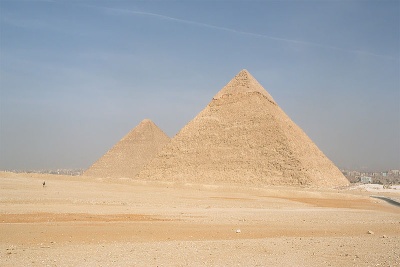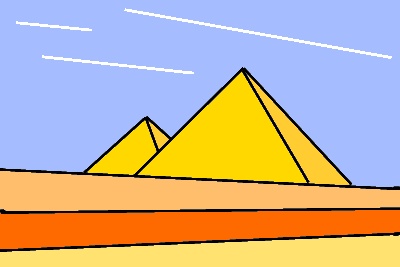Skip over navigation
In abstract or computer generated art, a real object is often represented by a simplified set of shapes, lines or curves.
Take a look at the picture below:


If you wanted to describe mathematically the line segments used to draw this picture, all you would need to do is decide where to put the axes and then work out the equations of all the straight lines.
Here is a set of instructions to create an abstract representation of another well known landmark (download as a Word or PDF file).
Now try this for yourself - choose an image, perhaps a photograph of a famous location, or a famous painting.
Think how it might be broken down into shapes or segments of lines.
Can you create a set of instructions for your picture?
Once you have created your instructions, give them to a friend to follow.
Can you devise a way to describe mathematically each region so that you can give instructions for colouring your image?
You may wish to use curves as well as straight lines. To explore abstract art using more complicated mathematical functions, take a look at Painting by Functions.
Have a go at creating your image using a graphing software package such as Geogebra.
Please send us any of your creations (together with your instructions).

Or search by topic
Number and algebra
Geometry and measure
Probability and statistics
Working mathematically
Advanced mathematics
For younger learners
Painting Between the Lines
Age 11 to 16
Challenge Level 





In abstract or computer generated art, a real object is often represented by a simplified set of shapes, lines or curves.
Take a look at the picture below:

The picture could be represented in an
abstract way using straight lines:

If you wanted to describe mathematically the line segments used to draw this picture, all you would need to do is decide where to put the axes and then work out the equations of all the straight lines.
Here is a set of instructions to create an abstract representation of another well known landmark (download as a Word or PDF file).
Now try this for yourself - choose an image, perhaps a photograph of a famous location, or a famous painting.
Think how it might be broken down into shapes or segments of lines.
Can you create a set of instructions for your picture?
Once you have created your instructions, give them to a friend to follow.
Can you devise a way to describe mathematically each region so that you can give instructions for colouring your image?
You may wish to use curves as well as straight lines. To explore abstract art using more complicated mathematical functions, take a look at Painting by Functions.
Have a go at creating your image using a graphing software package such as Geogebra.
Please send us any of your creations (together with your instructions).
You may also like
Intersections
Change one equation in this pair of simultaneous equations very slightly and there is a big change in the solution. Why?

